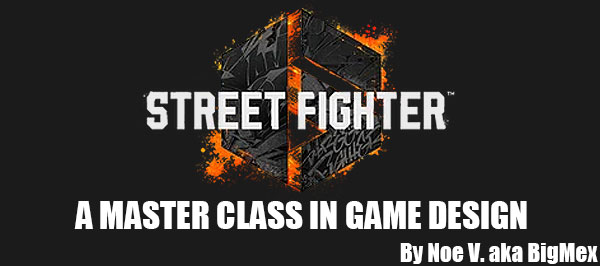
The game that arguably influenced the development of Street Fighter II more than any other title was from a rival studio. In 1987 Technos developed, and Taito published Double Dragon for the arcades. It was a smash hit, getting a number of sequels, and home adaptations over the following 30+ years. In the game players took control of Billy, and Jimmy Lee, as they chased a gang that had kidnapped Billy’s girlfriend Marian. Players fought wave after wave of the Black Warriors gang members across an entire city. The plot certainly sounded familiar to long-time brawling fans. You can also probably guess where I was going with the story. Capcom learned a few lessons that year. The original Street Fighter also came out in 1987, and didn’t see half the success of Double Dragon. Capcom saw the beginning stages of a new genre. They needed to cash in on it. So they started development on a new game that was designed to be better than Double Dragon in every regard. This meant better graphics, better controls, better stage designs, better enemy types, and better heroes. What many people might not know was that the game was originally called Street Fighter '89. Guy was meant to replace Ryu, Cody meant to replace Ken, and a large wrestler named Haggar would add some color to the lineup.
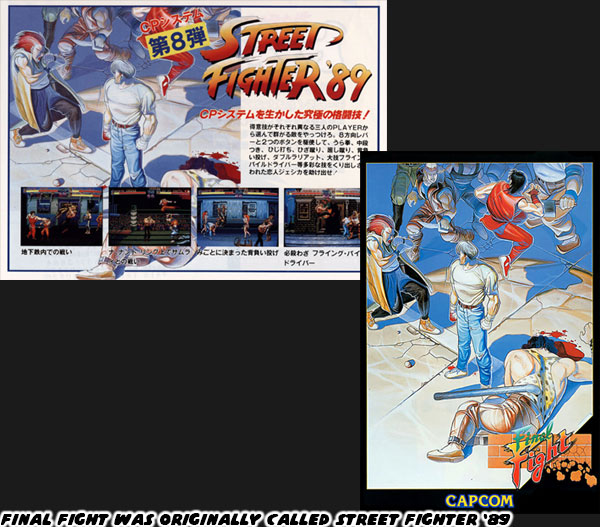
Arcade owners liked the idea, but were clamoring for something closer to the original Street Fighter. They saw an interest in fighting, more than just video boxing games. They wanted a title that created the action of martial arts movies. Spartan-X aka Kung-Fu Master by IREM was a start, it was essentially a version of the final Bruce Lee movie Game of Death. It was fun, but the 2D game play was limiting. Fans, and arcade operators wanted something more robust. Double Dragon could definitely be seen as the first brawler that played like an action movie. Technos had actually developed
Nekketsu Kouha Kuniou-Kun aka Renegade, which was published by Taito in 1986 as, a year before Double Dragon. This game would make its way to the NES home console a couple of years later, where it was better known as River City Ransom. The animation, control, and enemy design were rough around the edges, but the template for all future brawlers was definitely there.
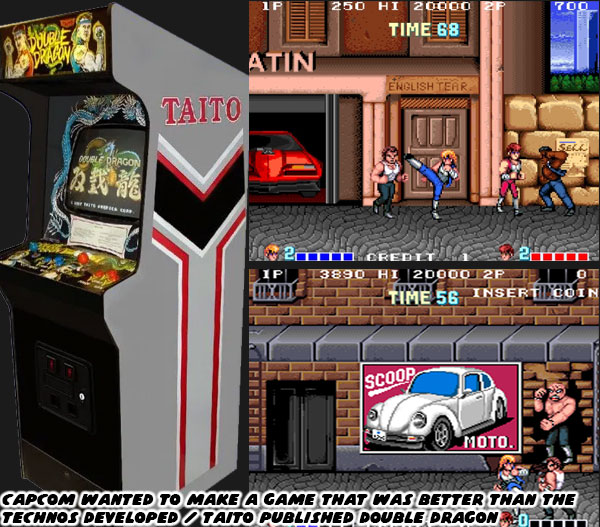
Interestingly enough Takashi Nishiyama the guy that created Kung-Fu Master was the same person that would design the first Street Fighter. The thing that many arcade, and fighting game historians fail to mention was that Mr. Nishiyama had designed a game for Capcom that was as old as Renegade.
Hissatsu Buraiken aka Avengers by Capcom came out in 1986, and was an overhead street brawling game. Capcom had a string of overhead games across different genres. It was a format that the studio knew how to work with. The space shooter Vulgus, the western Gun Smoke, the post-apocalyptic car game Led Storm, and war game Commando were all overhead titles. Mr. Nishiyama created a brawler using a similar mechanic.
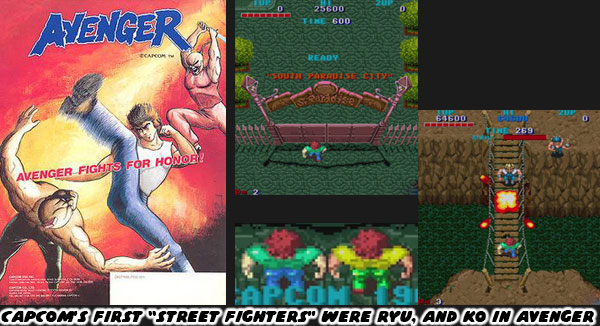
Players traveled through Paradise City (a full year before before the popular song with the same name by Guns n' Roses came out) freeing women that had been kidnapped by the evil gang leader Geshita. Although the game wasn't acknowledged by the masses, it was nonetheless important because it was teaching Capcom what worked, and what didn't in the genre. The other thing of note was that this game probably inspired the development of one of Capcom's greatest heroes. Ryu was the name of one of the Avengers. The other was Ko, predating Ken even. They wore white tee shirts, and jeans. Not at all the same costumes of Ken, and Ryu. What connected the Ryu's, aside from their names, were the red hair.
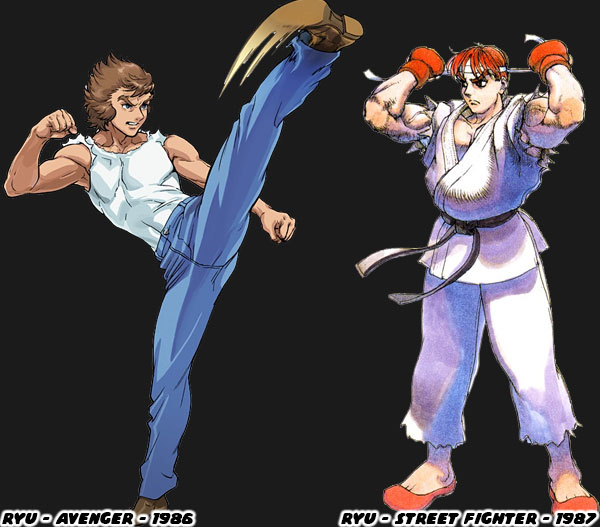
Fans of SF often forget that Ryu had red hair in the original game. Not that it mattered because with all due honesty that the original Street Fighter was not a popular game. At least it wasn't in the arcades that I visited when it came out. Mr. Nishiyama was taking bold chances with the control of the title. He convinced the bosses at Capcom to create foam-filled pads instead of buttons for the inputs. His thinking was that the jab, medium, and fierce strikes could be activated depending on how hard you hit the pads. He also "hid" special attacks in the game, and hoped that audiences were willing to shell out their quarters trying to figure out the secrets to the fireball, dragon punch, and hurricane kick. I distinctly remember playing the game, and having a hard time getting the moves to happen. Also the foam buttons were very stiff, they were not as forgiving as the foam used in Nerf products. You really had to strike them hard to get them to register fierce attacks. One arcade visitor taught me the best way to hit the buttons was with a hammer fist. He said if you tried punching them you might break a finger, or roll your wrist. I never forgot that advice. After playing it a few times I decided to stick with games that were much more enjoyable, like Double Dragon. Arcade operators seemed to like Street Fighter, but they hated having to repair, or replace the foam controls. They were simply too awkward for audiences to use. So Capcom developed the six-button kit to replace them. The standard for fighting game controls was essentially set from that moment on.
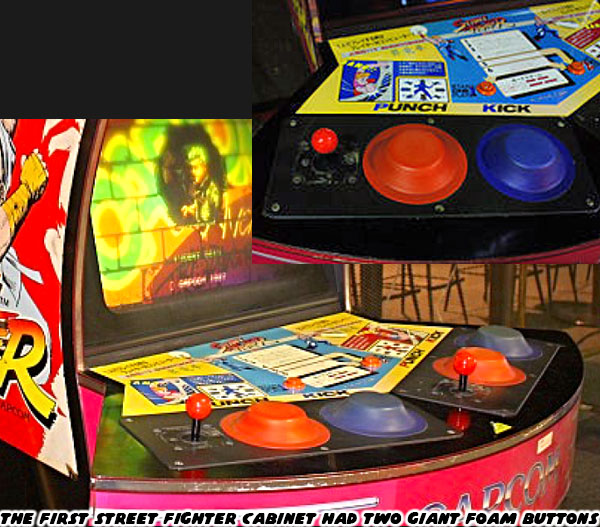
The evolution of the fighting game genre moved quickly as I transitioned through school. The earliest games that came out involving fighting, like
Yie Ar Kung-Fu, and Kung-Fu Master happened when I was in grade school. When they started getting more refined like Street Fighter, and Double Dragon I was in Jr. High / Middle School. The format came into maturity when I was in high school. I was a senior in high school when the game that forever changed my life came out. The year was 1991, and Street Fighter II was just on the horizon. It had not yet been released. The game that actually blew my mind was Final Fight. I heard rumors that there was an arcade game that was better than Double Dragon. I just never saw it in the arcades that I visited. It was starting to frustrate me that after two years I had yet to see it. My family journeyed to shopping malls all over the southland; the Carson Mall, Lakewood Mall, Del Amo Fashion Island, and Long Beach Plaza were all in rotation, there were at least six different arcades between them. None of them had this mystery brawler. All of that changed during a senior field trip to Cal State Long Beach.
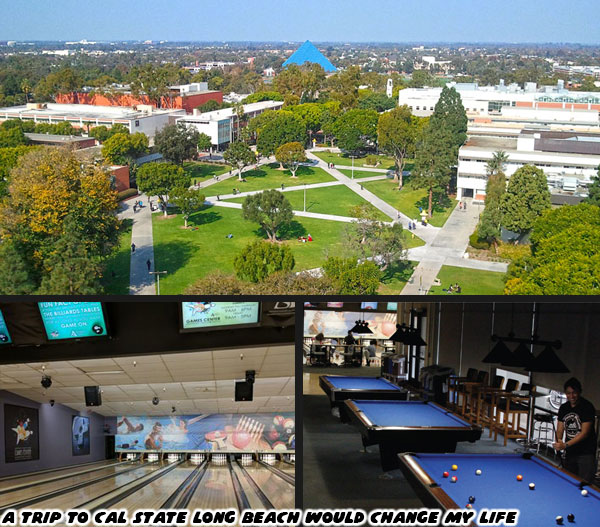
My friends, big brother, and I were all on the trip. It was a very low key affair. The weather was overcast, and drizzly all day. We got a chance to do a very casual tour of the campus. We attended a few presentations, heard from some speakers, and students. We were allowed to wander the student union, and see how sweet college life could be. The school had a food court, bowling alley, and several tv rooms with big screens, and comfy couches. A handful of students were watching cartoons, possibly
Animaniacs in the middle of the afternoon. You could guess how jealous we were of the college life. My friends found the arcade, it was empty at the time. They had all of the typical things you would expect to find, the foozeball table, and air hockey table, and an assortment of arcade cabinets. I was surprised that almost every title was brand new. They even had a few that weren't even available at my local arcade. That was when I was introduced to that life-changing game. I spotted the massive cabinet by Capcom with three controls. That was one more controller than just about every other game, including Double Dragon had. I instantly knew that this must be the title that I had been hearing about. I realized that I might get just one chance to play through it so I got $5 worth of quarters, and started playing. My big brother knew that it was supposed to be lunch money, but he joined in as well. As did our best friend Robert. Although I would later become a Haggar main, my first play through was with the blindingly fast Guy.
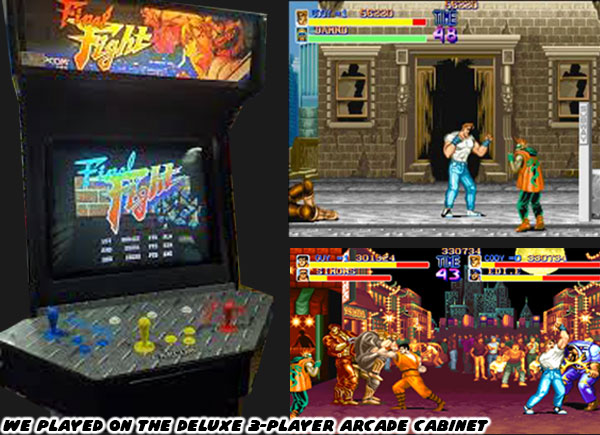
Over the next 45 minutes the three of us went on an epic journey. It was nonstop mayhem as we fought wave after wave of Mad Gear gang members. This place called Metro City certainly reminded us of New York City. The skyscrapers, the subways, the harbor, and Statue of Liberty told us that the studio essentially added a sixth borough to the NYC map. We did our best to absorb every detail. Learn the best strategies, and try to get as far as we could. If we started to run low on lives we would slip a dollar to one of our friends so they could get change from the machine. You couldn’t imagine how many close calls we had where two of us were running for change, while one of us was fighting off the gang all by themselves. We were no stranger to arcade games, but this adventure just seemed to keep going, and going. One of the actual CSULB students checked in on us, and he said as far as he knew nobody had ever beaten the game. Normally action games lasted 20 or 30 minutes at the most. After a half hour we were starting to wonder if the game even had an ending. We had no idea how long Final Fight was going to last, but it didn’t matter. We were enjoying every second of it.
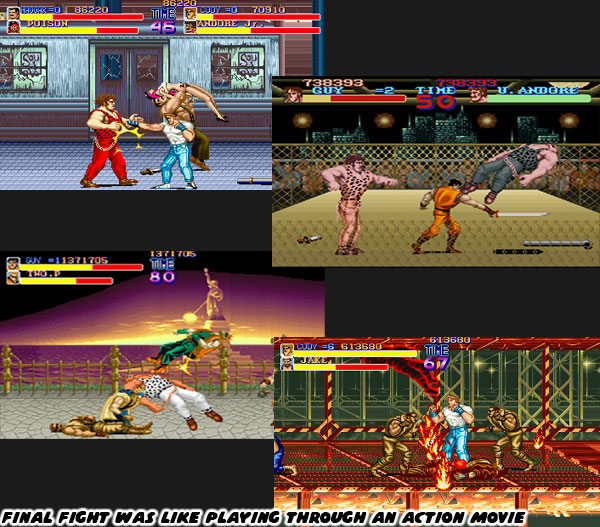
Mind you we started playing over what was supposed to be our lunch break. We had an hour to eat, and then get back to our bus. Our friends would stop by between bites of their lunch to watch the action. They cheered us to keep going as we cleared level, after level. Others got worried about the time, and started heading back to the bus drop off. We were worried about missing the bus, and catching hell from our teachers, and parents. At the same time we were in too deep, and had to get through to the end. There was so much frenetic energy that day that it was clearly palpable. The last battle against Belger was the highest stakes encounter you could imagine. I discovered that Guy was fast enough to punch the crossbow arrows out of the air. I would parry those while my partners would circle him for a counter attack. As we backed him against the glass I managed to kick him through the window. We went crazy at the ending as it played out. Our celebration was short lived. We had about 8 minutes to get lunch, and get back to the bus. We managed to grab our pre-packed subs, and drinks, and run to the parking lot. The bus driver said that food wasn’t allowed onboard so we stuffed our mouths in the rain. Not that potentially choking to death, or severe indigestion mattered. We were glowing with success.
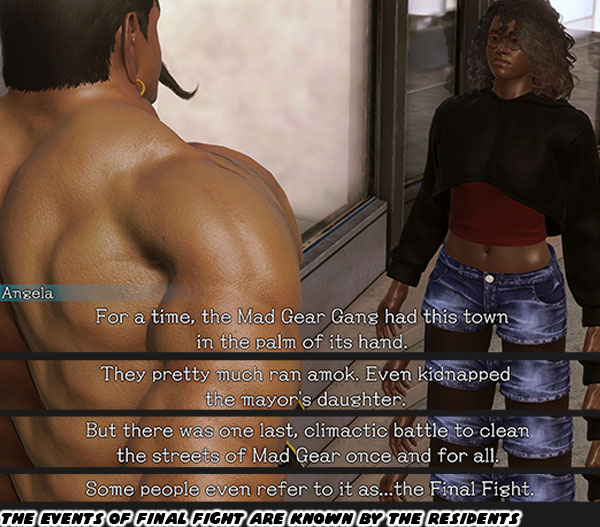
We didn’t remember anything the guest speakers told us that day. We didn’t remember anything that our teachers said, or what the recruiters promised if we committed to CSULB. The only thing we remembered was the feeling of accomplishment. We went on an adventure together, we fought a battle together, and ultimately we won the war together. Final Fight absolutely brought my best friend, brother, and myself closer. That was a memory that could never be replaced. Street Fighter 6 immortalized Mike Haggar, and his war on Mad Gear through the design, and resident encounters in Metro City. Seeing those multiple callbacks in the game filled me with tremendous emotions. I was proud, nostalgic, and even a little bit melancholy as I went through SF6. After 30+ years I didn’t need to be told the legend by the citizens. I was there, we were there, we had taken part in that history. I played Capcom games for years before FF, but I didn’t fall in love with a series until that moment. When I got married almost 20 years later there was a Final Fight connection to the ceremony. I’ll explain it in the next blog. I hope to see you back for that. If you are a long time fan of Final Fight, or Street Fighter then I would like to hear your impressions of SF6. If you have never played any game previously then tell me your experiences in the comments section please. As always if you would like to sponsor me
please visit my Patreon page and consider donating each month, even as little as $1 would help make better blogs and even podcasts!




















No comments:
Post a Comment